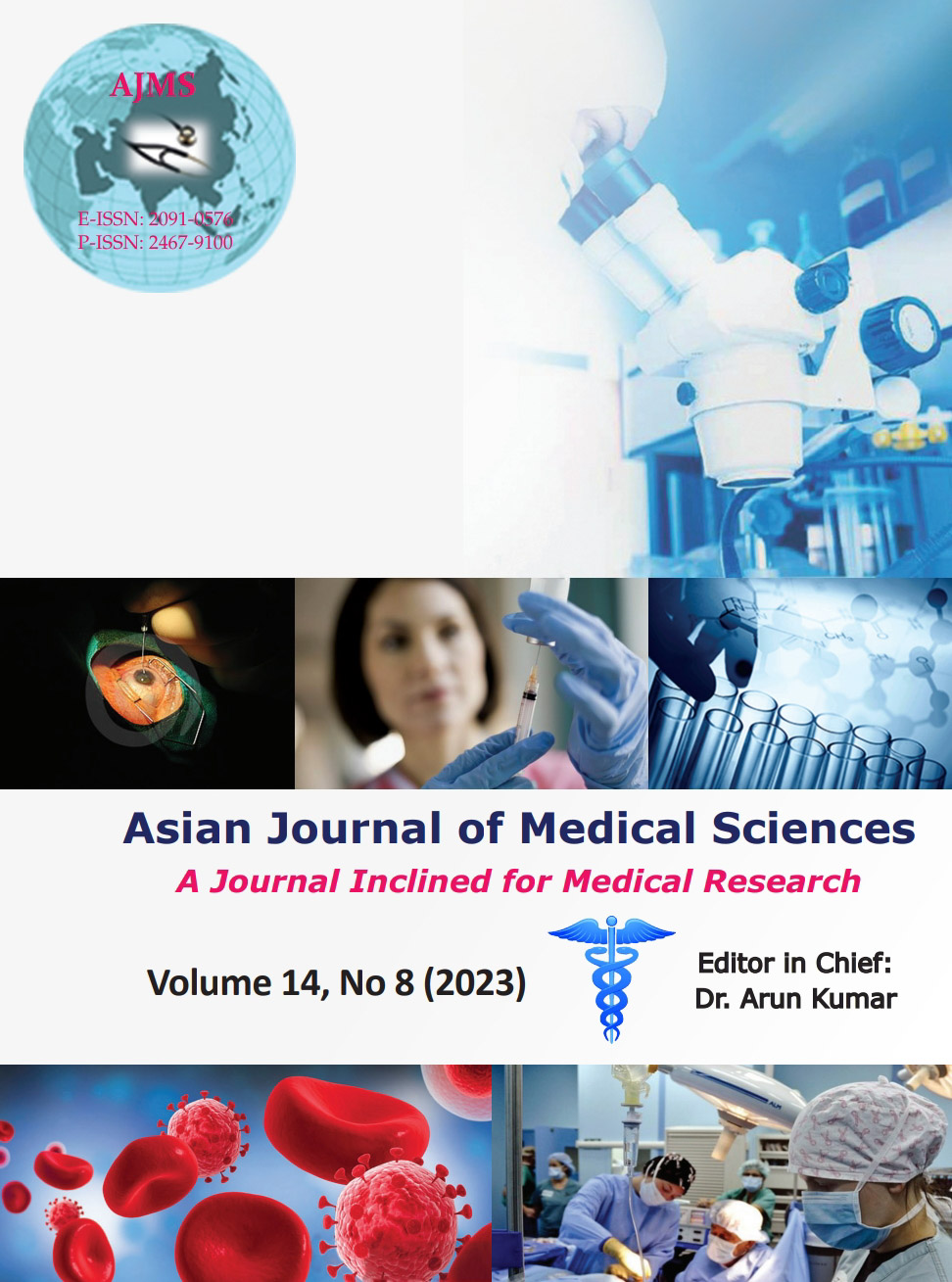Microbiological analysis of urinary calculi: A study from a tertiary care hospital of Eastern India
Keywords:
Urolithiasis; Urinary tract infection; Gram negative bacteria; Coliform bacilli; Bacterial sensitivity testsAbstract
Background: Among various renal pathology, urolithiasis among patients of urinary tract infections (UTIs) forms a major group. The pathophysiology of such patients varies from the group of urolithiasis patients without infection.
Aims and Objectives: The current study was planned and conducted to find out the bacteriological profile of urinary calculi among patients of UTI.
Materials and Methods: A descriptive study was conducted by the Department of Microbiology and Surgery of JLNMC, Bhagalpur, Bihar. A total of 100 patients were enrolled in the study, having urinary calculi who either visited the outpatient department or who were admitted at the hospital for planned procedure for removal of stone between January 2021 and December 2021.
Results: Male predominance was noted with a mean age of presentation at 44.3 years. 67% of the patients had some or the other symptoms of UTI, most common symptom being excruciating groin pain. Recurrent episodes of UTI were noted among female patients. Bacterial growth on culture was obtained from the urine samples of 46 patients. Escherichia coli were the most common isolated organism. Most common type of stone was a mixed type of stone formed by calcium oxalate and calcium phosphate followed by struvite stones and uric acid stones.
Conclusion: Various factors of clinical significance among patients of urolithiasis and UTI are gender, age, and clinical symptoms. Gram-negative bacilli are the most common bacteria found in UTIs in patients with urolithiasis.
Downloads
Downloads
Published
How to Cite
Issue
Section
License
Copyright (c) 2023 Asian Journal of Medical Sciences

This work is licensed under a Creative Commons Attribution-NonCommercial 4.0 International License.
Authors who publish with this journal agree to the following terms:
- The journal holds copyright and publishes the work under a Creative Commons CC-BY-NC license that permits use, distribution and reprduction in any medium, provided the original work is properly cited and is not used for commercial purposes. The journal should be recognised as the original publisher of this work.
- Authors are able to enter into separate, additional contractual arrangements for the non-exclusive distribution of the journal's published version of the work (e.g., post it to an institutional repository or publish it in a book), with an acknowledgement of its initial publication in this journal.
- Authors are permitted and encouraged to post their work online (e.g., in institutional repositories or on their website) prior to and during the submission process, as it can lead to productive exchanges, as well as earlier and greater citation of published work (See The Effect of Open Access).




